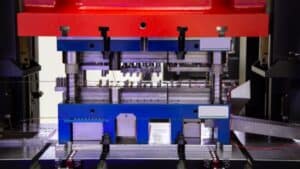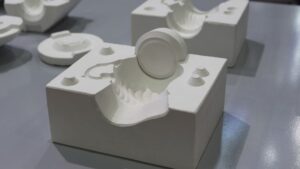What is Type II Anodizing?

Type II anodizing is a method used to treat aluminum. This process creates a protective layer known as an aluminum oxide coating.
Type II anodizing comes in Class 1 and Class 2 designations.
Class 1 has no color additives and provides a clear anodized finish, showing off the natural metallic appearance of aluminum. This class is ideal for applications needing a subtle look. Class 2 includes dyed color finishes and offers greater customization.
The benefit of Type 2 Anodizing
- Corrosion Resistance: Provides excellent protection against environmental factors.
- Wear Resistance: Increases surface hardness, making it suitable for high-wear applications.
- Aesthetic Appeal: This can be dyed in various colors, enhancing the visual appeal of the final product.
- Low Maintenance: Anodized surfaces are easier to clean and maintain compared to untreated aluminum.
What are the Differences Between Type II and Type III Anodizing?
| Feature | Type II Anodizing | Type III Anodizing |
| Process Type | Sulfuric acid anodizing | Hard anodizing |
| Electrolyte | Sulfuric acid solution | Sulfuric acid solution (with specific parameters) |
| Thickness of Coating | 1.8µ-25.4µ | 12.7µ-115µ |
| Porosity | More porous, allowing for dyeing and sealing | Less porous, more dense, and resistant |
| Corrosion Resistance | Good corrosion resistance | Excellent corrosion resistance |
| Applications | General applications, decorative finishes, and some structural components | Heavy-duty applications requiring high wear and corrosion resistance |
| Coloring | Easily dyed in various colors | Limited dyeing capability due to reduced porosity |
| Cost | Generally lower cost | Higher cost due to longer processing times |
The Type 2 Anodizing Process
In type II anodizing, aluminum is transformed into a durable material using an electrochemical process. This involves applying an electrical current, treating the metal in a chemical bath, and developing a protective oxide layer.
Anodizing Process
- Electrolytic Cell Setup: The cleaned aluminum part is immersed in a sulfuric acid electrolyte solution. The anodizing process involves setting up an electrolytic cell, where the aluminum part acts as the anode (positive electrode), and a cathode (negative electrode) is also placed in the solution.
- Current Application: A direct current is applied, causing oxygen to be released at the anode (the aluminum part) and forming aluminum oxide (Al2O3) on its surface. This oxide layer grows from the aluminum substrate and is porous in nature.
- Temperature and Time Control: The process typically operates at temperatures between 15°C and 25°C (59°F to 77°F) and can last from 30 minutes to several hours, depending on the desired thickness of the anodized layer.
Post-Anodizing Treatments
After anodizing, the porous aluminum oxide layer can be sealed to enhance corrosion resistance. This is usually done through a hot water sealing process or by using other sealing methods (like nickel acetate sealing) to close the pores and improve durability.
If color is desired, the anodized surface can be dyed before sealing. The porous nature of the anodized layer allows dyes to penetrate and bond, resulting in a wide range of color options.
Technical Specifications and Standards

MIL-A-8625 and ASTM
Type II anodizing follows the military standard MIL-A-8625. This standard outlines the required processes and properties for anodic coatings. It ensures that the coatings provide adequate corrosion resistance and electrical insulation.
MIL-A-8625 specifies test methods, such as the salt spray test, to evaluate the durability of the coatings.
Apart from MIL-A-8625, ASTM also provides guidelines on testing and quality assurance.
ASTM International, formerly known as the American Society for Testing and Materials, is a globally recognized organization that develops and publishes voluntary consensus technical standards for a wide range of materials, products, systems, and services.
ASTM standards cover various aspects of materials testing, including mechanical properties, corrosion resistance, and surface treatments. In relation to anodizing, ASTM has established standards such as ASTM B580, which provides guidelines for the anodic coatings on aluminum, and ASTM B244, which outlines methods for measuring the thickness of anodic coatings.
Industrial and Commercial Applications

| Industry/Application | Uses/Components | Benefits |
| Aerospace Industry | Aircraft frames, landing gear, engine components | Corrosion resistance, lightweight properties |
| Automotive Industry | Decorative trim, wheels, engine components | Durability, aesthetics, weight reduction |
| Architectural Applications | Building facades, window frames, handrails | Long-lasting protection, visual appeal |
| Consumer Electronics | Housings for smartphones, laptops, cameras | Protection, aesthetic finishes |
| Industrial Equipment | Machinery parts, tools | Increased wear resistance, extended service life |
| Sports Equipment | Bicycles, golf clubs, sporting goods | Enhanced strength, reduced weight, attractive finish |
Frequently Asked Questions
What distinguishes Type 2 anodizing from Type 3 anodizing in terms of durability and application?
Type 2 anodizing, also known as Sulfuric Acid Anodizing, forms a thinner layer of aluminum oxide compared to Type 3. Type 3, or hard anodizing, is thicker and more durable, making it suitable for heavy-duty applications. You might choose Type 2 for decorative purposes or applications needing moderate protection.
How does the anodizing thickness of Type 2 compare to other types?
Type 2 anodizing typically results in a coating that is thinner than Type 3 but thicker than Type 1.
Can you explain the difference between Class 1 and Class 2 anodizing within the Type 2 category?
Class 1 anodizing produces a clear or natural finish without dyes, offering basic protection. Class 2 allows for dyeing, adding color to the finish.
In what ways does Type 2 anodized titanium stand out from other forms of anodized metals?
Type 2 anodized titanium is notable for its unique colors and enhanced corrosion resistance. It maintains its lightweight property while offering a visually appealing finish. Compared to aluminum, anodized titanium can achieve more vibrant, varied hues, making it ideal for decorative use.
What should you consider when choosing a service provider for Type 2 anodizing?
When selecting a service provider, consider their experience, quality control measures, and ability to meet specific requirements like color and thickness. Ensuring they can handle your project’s specifications can lead to better results. Checking client reviews might also give you insight into their reliability and service quality.






